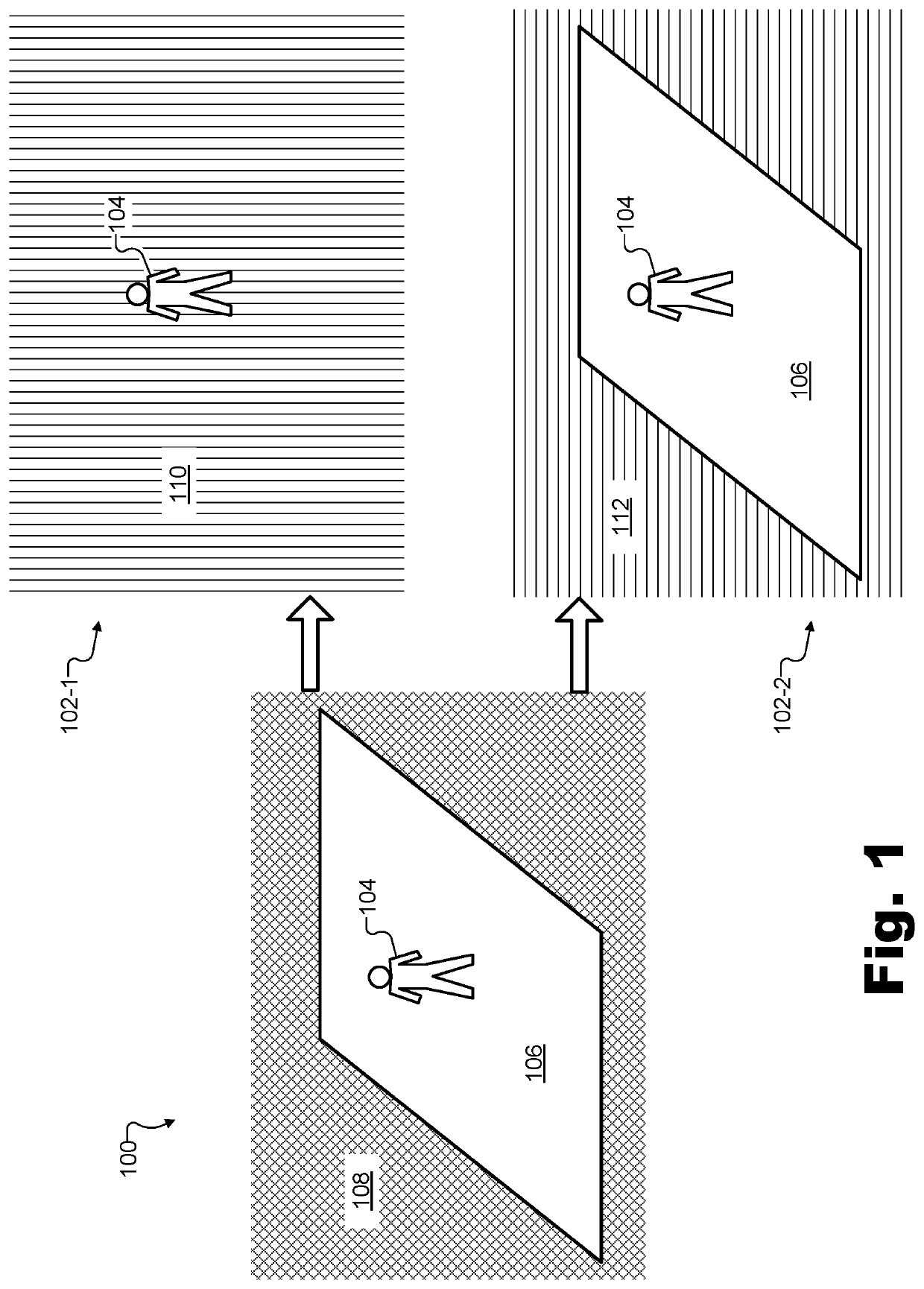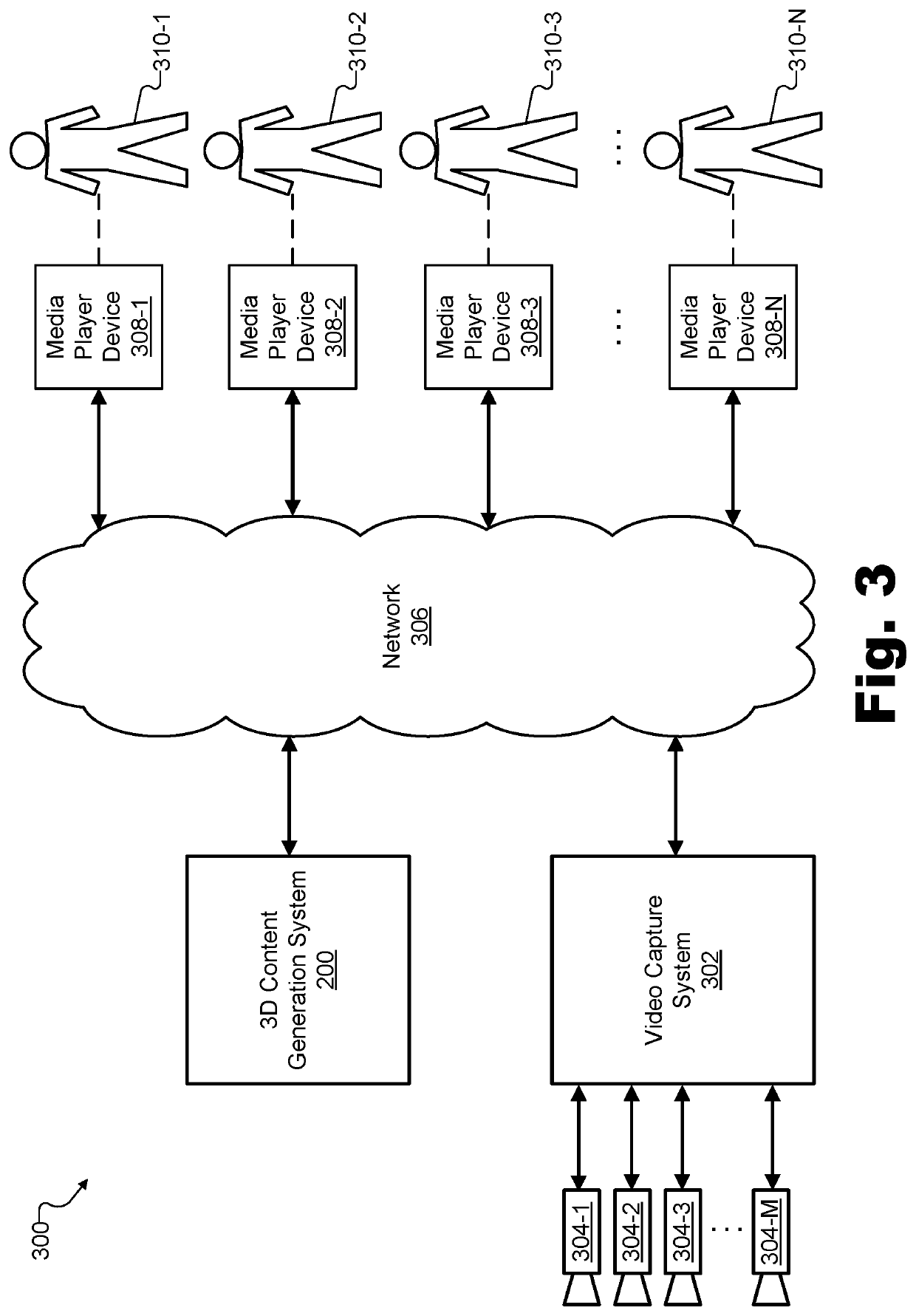Methods and Systems for Performing 3D Simulation Based on a 2D Video Image
- Summary
- Abstract
- Description
- Claims
- Application Information
AI Technical Summary
Benefits of technology
Problems solved by technology
Method used
Image
Examples
Embodiment Construction
[0015]Methods and systems for generating three-dimensional (“3D”) content based on one or more two-dimensional (“2D”) video images are described herein. For instance, in some implementations, a type of 3D content generation system referred to herein as a volumetric modeling system may access a plurality of 2D video images that are captured from a specific set of vantage points around a real-world scene. Such images may be used to generate volumetric 3D content in real time. For instance, the set of vantage points may be arranged in a calibrated formation encircling the real-world scene and video capture devices disposed at each of the vantage points may be calibrated with extrinsic parameters that relate each vantage point of each video capture device to a world coordinate system associated with the real-world scene. Such examples may be highly flexible and may be capable of modeling, in 3D, any object that may happen to come onto the real-world scene based on the 2D video capture o...
PUM
 Login to View More
Login to View More Abstract
Description
Claims
Application Information
 Login to View More
Login to View More - R&D
- Intellectual Property
- Life Sciences
- Materials
- Tech Scout
- Unparalleled Data Quality
- Higher Quality Content
- 60% Fewer Hallucinations
Browse by: Latest US Patents, China's latest patents, Technical Efficacy Thesaurus, Application Domain, Technology Topic, Popular Technical Reports.
© 2025 PatSnap. All rights reserved.Legal|Privacy policy|Modern Slavery Act Transparency Statement|Sitemap|About US| Contact US: help@patsnap.com



